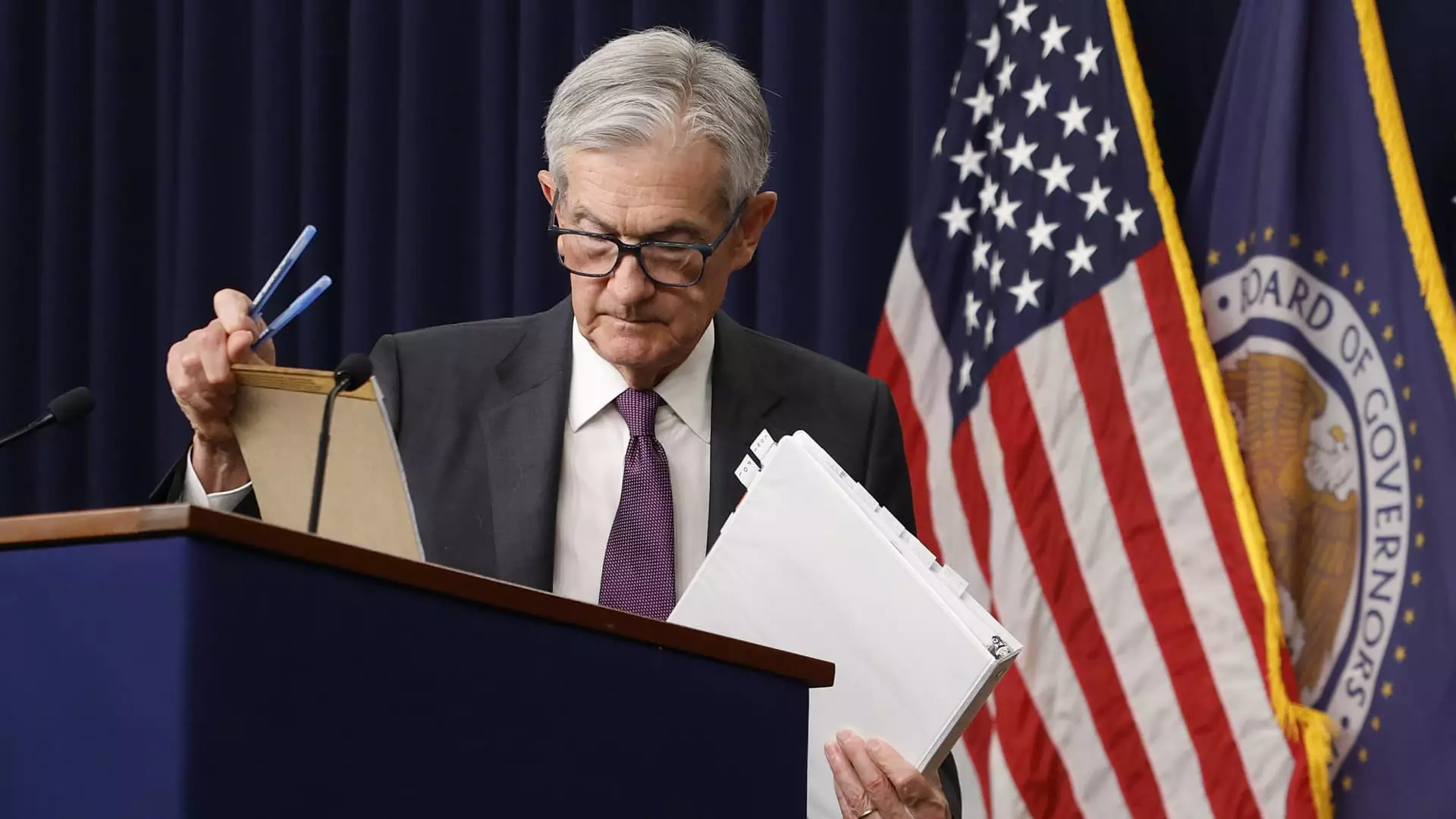In an ever-evolving economic landscape, Federal Reserve Chair Jerome Powell has put forth a dire warning: the Federal Reserve’s dual mandate of controlling inflation while fostering economic growth could soon find itself at odds. His most recent speech highlights a tension that can’t be ignored as uncertainties loom over the U.S. economy, particularly due to President Donald Trump’s tariffs. The precarious balance between inflation and growth creates a dilemma that not only challenges policymakers but could also have dire repercussions for the American public if not handled with precision and care.
Powell’s comments reflect a deep-seated concern shared by many economists that current economic policies might overshoot their intended targets. It’s one thing to predict inflation; it’s another entirely to grapple with the possibility of rising prices juxtaposed against the need for sustainable growth. History has taught us that inflation can, in many ways, be a silent killer, eroding purchasing power and disproportionately impacting lower-income families. This inherent tension, far from being academic, could drive a wedge between the Fed’s objectives, leaving ordinary Americans caught in the crossfire.
The Tariff Time Bomb: More Than Just a Tax
At the heart of Powell’s concerns are the tariffs imposed by the Trump administration, described as a tax on imports. It’s a blunt tool that economists generally agree produces short-term, often unpredictable inflationary effects. Yet, the real worry stems from the sheer breadth of these tariffs, which, Powell himself remarked, might lead to persistent inflationary pressures that could disrupt long-term economic stability.
For consumers, this situation translates into higher prices at stores—grocery bills swell, and the cost of everyday items becomes a burden. The immediate benefits of tariffs, such as preserving jobs in specific sectors, are overshadowed by the broader economic implications that threaten to create a domino effect. The ripple of rising prices is likely to pinch the most vulnerable while serving only to inflate profit margins for a handful of corporations thriving during this tumultuous time.
Furthermore, Powell mentioned inflation projections, signaling a potential rise to 2.6% for March. This number, while slightly above the Fed’s goal, is perhaps an early warning sign of worsening conditions if tariffs remain a fixture of economic policy. The question remains: how long can this inflation be contained before it spirals beyond the Fed’s control?
The Slowdown Effect: A Confluence of Uncertainties
Adding fuel to the economic fire is the expected slowdown in GDP growth during the first quarter, a reflection of both international and domestic uncertainties. Powell noted that while consumer spending appeared modestly robust, it stemmed largely from preemptive buying activities before the onset of tariffs. Retail sales did show a surprising rise, but one cannot overlook the underlying manipulations of market behavior during such times. The looming tariffs could compel consumers to make purchases now, only to sharply curtail spending later—a classic economic psychosis that leaves analysts scratching their heads.
Moreover, Powell’s cautious optimism regarding the economy being in a “solid position” feels eerily reminiscent of the complacency that pervades markets in times of instability. Consumer spending, while showing promise, does not exist in a vacuum. It’s susceptible to external shocks, trade disputes, and the vagaries of government policy. Such a precarious state only exacerbates an already complicated future.
The Fed’s Waiting Game: An Economic Standoff
As Powell indicates, the Fed finds itself positioned to adopt a ‘wait-and-see’ approach, which is often perceived as indecisiveness in times of crisis. This reluctance to act promptly can invite speculation and volatility into markets, rippling through investment patterns and public sentiment alike. Heightened uncertainty can lead to a clenched grip on economic resources, stalling investments and jeopardizing jobs in the long term.
The conundrum of fluctuating interest rates further complicates matters. With inflation potentially rising, the Fed might be swayed into keeping rates stable—or even raising them—to quell demand. Yet, should growth falter drastically, the temptation to lower rates could override caution. This pendulum swing threatens to amplify the disconnect between policy initiatives and the tangible experiences of everyday Americans.
A Call for True Economic Engagement
Ultimately, this precarious interplay between inflation, tariffs, and economic growth serves as a wake-up call for policymakers. A balanced approach is urgently needed—one that doesn’t simply react to immediate crises with empty rhetoric but engages proactively with the realities faced by citizens. Supporting local businesses while curtailing inflation through sensible trade policies and cooperative economic strategies should define our path forward.
With the economy hanging in the balance, the call for a more thoughtful approach becomes louder. Can we navigate these challenges not just for profitability, but more importantly, for the people who rely on sound economic stewardship? The stakes are high, and the clock is ticking.

